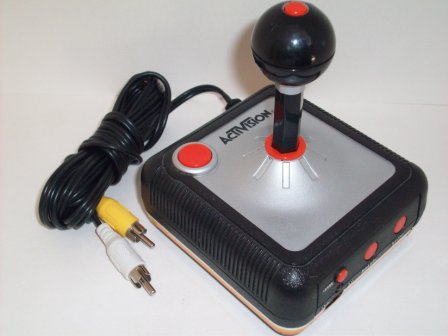The Post-Original Atari Age
The history of self-contained game systems goes all the way back as far as the mid-1970s, when video games were a brand-new concept,
and they played little more than a handful of variations of Pong and/or Breakout.
Fast forward to the early 1990s, when a gaming subculture called retrogaming was on the rise. Although obvious, for the purposes of
context, retrogaming is generally defined as the collecting and playing of video games on consoles and computers of yore. A product
of this was the rise of "clone consoles". These clones emulate the hardware of existing game consoles, most commonly the NES due to
how popular and iconic its games are and how easy they are to emulate. Also in the early 1990s, the price of system-on-a-chip
technology plummeted. These two factors gave way to the first console that's categorized as a "Plug n' Play" before the official
line that popularized it called TV Boy in 1992, following the closure of Atari Inc. after nearly 20 years in business. Why do I
mention this? Because the TV Boy featured 127 Atari 2600 games. Most were put on the system under different names from the original
cartridges, with most mentions of the original programmers removed.
Fast forward again to 2001, when a toy company called Toymax created a self-contained unit of their own with 10 Activision-made
Atari 2600 games built in, ushering in a new line of self-contained game consoles.

The original Toymax model from 2000/2001 was shaped like a traditional gamepad with two D-Pads (like a Virtual Boy) and no action
button. It came in several different colors: red, yellow, green, blue, and gray.

The version from 2004 after Jakks Pacific's buyout switched to a common joystick design like most Plug n' Plays do.
 The original Toymax model from 2000/2001 was shaped like a traditional gamepad with two D-Pads (like a Virtual Boy) and no action
button. It came in several different colors: red, yellow, green, blue, and gray.
The original Toymax model from 2000/2001 was shaped like a traditional gamepad with two D-Pads (like a Virtual Boy) and no action
button. It came in several different colors: red, yellow, green, blue, and gray.
 The version from 2004 after Jakks Pacific's buyout switched to a common joystick design like most Plug n' Plays do.
The version from 2004 after Jakks Pacific's buyout switched to a common joystick design like most Plug n' Plays do.